| A Plan of Our Garden
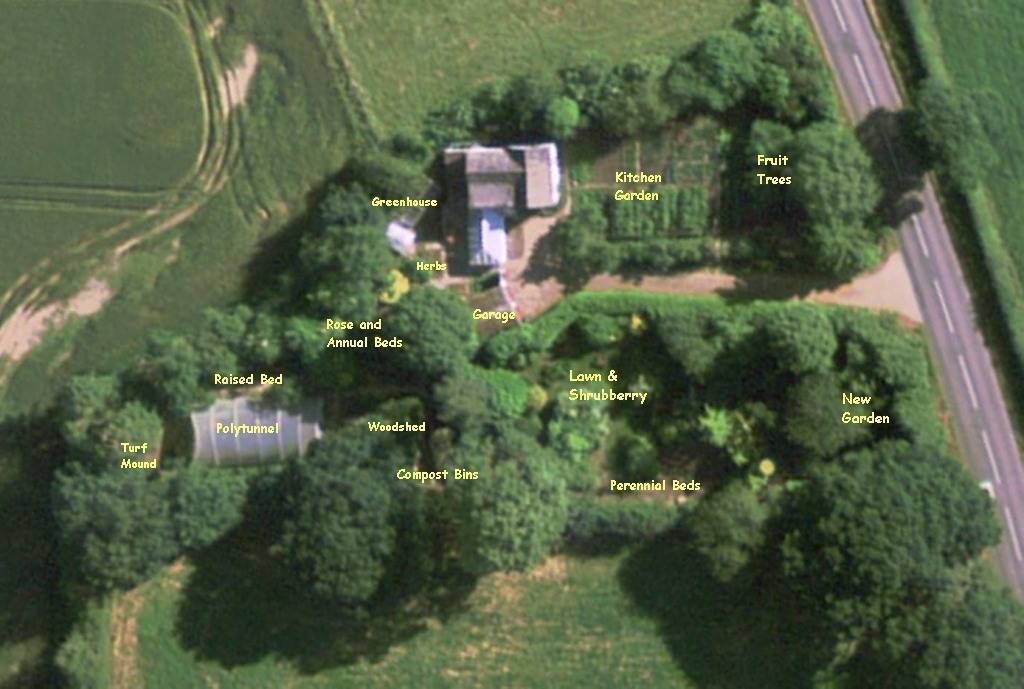 |
| This is a recent aerial view of our garden (courtesy of Google Earth) which I have marked to get some idea of where everything is. The top of the picture is roughly North. I give a brief description of each area below with links to other pages for more information and pictures.
|
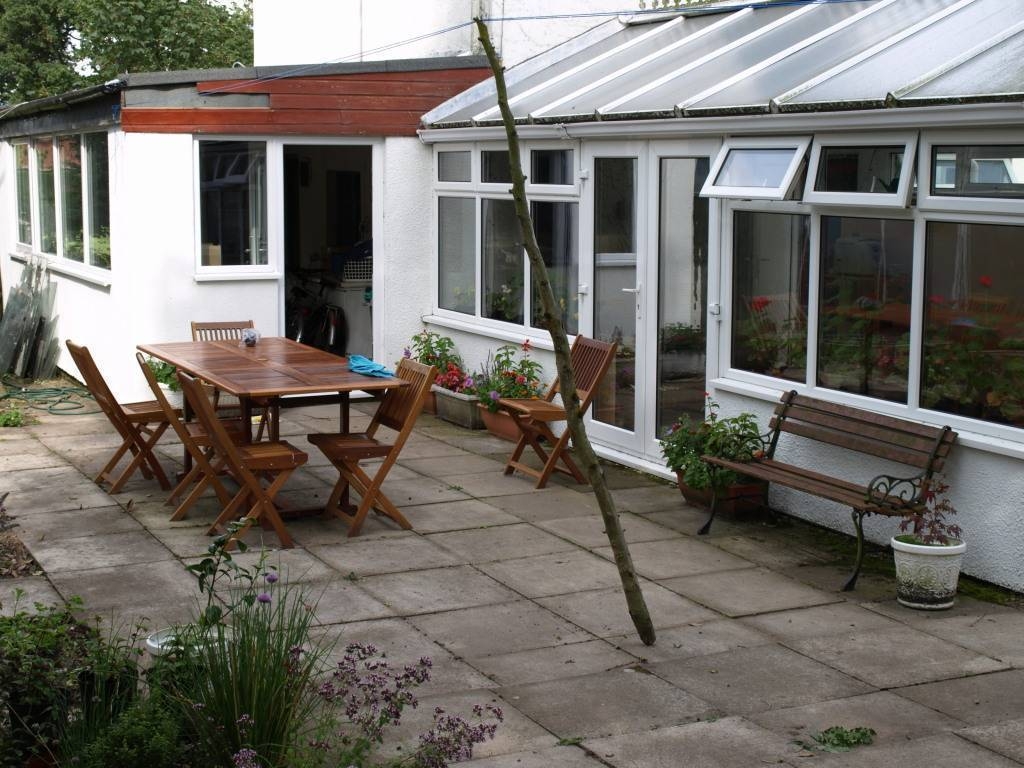 The house is at the north western corner of the plot. It The house is at the north western corner of the plot. Itstarted off just as a two up two down cottage in the early part of the 19th century; that is just the part at the east end. A new wing containing a kitchen, downstairs bathroom and third bedroom was added in the 1930s at the north side and this was extended in the 1950s to the south by building a replacement bathroom on top of the old bathroom and turning this into a cloakroom and toilet. The cloakroom I later converted into an office.A lean-to utility/conservatory was added on the west side in the 1960s. This only had a corrugated plastic
The drive, which was just roughly laid rubble, we replaced in 2002 with cobble effect concrete. As you can see it is quite long. The north side has a wide flower bed with a holly hedge half way and the rest a mixture of tall grasses and shrubs. Down the south side runs a cypress hedge. part Lawson's and part Leylandii. There is a double detached garage at the top of the drive.
The grounds are completely enclosed by hedges, mainly mixed rural species such as hazel, willow, hawthorn, blackthorn, beech, elder and holly. There are also several large trees, including three oaks, an ash, two sycamores and two field maples. Also several damson and plum trees. 4 lilacs, white, pink, red and purple, forsythia, flowering cherries and choisya. There are also several trees growing within the garden including a Norway Spruce, another ash and a Leyland cypress which we have allowed to grow to it full size.
Three sides of the property are surrounded by farmland with a minor road to the east which can be quite busy during the morning and afternoon rush. Beyond this are more open fields. Most of the fields in North Shropshire and the Marches at the southern end of the Cheshire Plain, including those nearby, contain several large trees, oak ash and beech mainly, and are surrounded by rural hedging. The land is fairly flat with many winter ponds and several permanent ponds but never floods since there are no nearby rivers. Unfortunately this damp terrain encourages the growth of ivy which chokes both trees and hedges and needs constant control to stop it taking over even cleared parts of any garden. The Kitchen Garden contains a large fruit cage 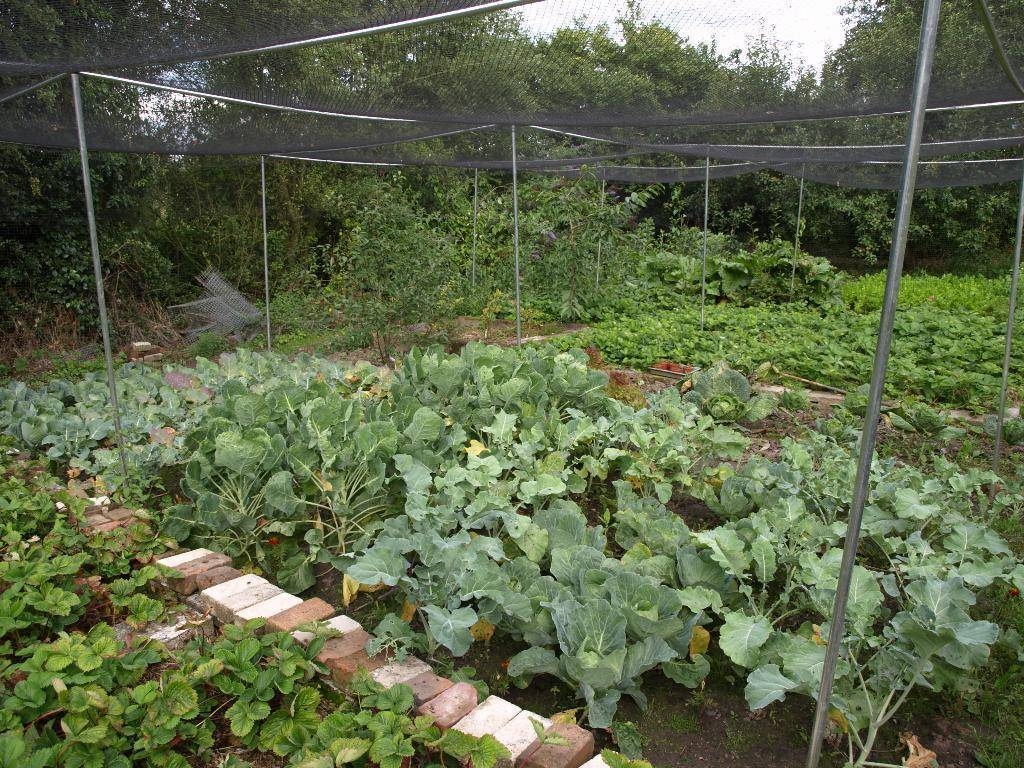 8 metres square and this takes up around half of the area. Inside this we grow fruit which needs protection from the birds; strawberries, raspberries, blueberries, cranberries and two cherry trees. We also use it to grow brassicas, cabbage, kale, calabrese, brocolli, brussel sprouts, which need protection from the pigeons. 8 metres square and this takes up around half of the area. Inside this we grow fruit which needs protection from the birds; strawberries, raspberries, blueberries, cranberries and two cherry trees. We also use it to grow brassicas, cabbage, kale, calabrese, brocolli, brussel sprouts, which need protection from the pigeons.
A path running east west divides the cage roughly in half with more space to the north than the south. Near the path is the cap for the well from which we pump our water. The southern part of the cage contains mainly raspberry canes but there is room for a few rows of vegetables at the western end. The northern part contains raised beds for the strawberries, blueberries and cranberries. These are grown in well rotted compost and in the case of the strawberries I use a three year rotation for the runners, clearing the third year bed after it has fruited so I can plant brassicas instead for the next two years till it is used again for strawberries. If there is room we sometimes grow a few rows of salad as well.
Outside the fruit cage the land is divided roughly into three areas, one near the house and two between the cage and the fruit trees, This is so we can grow potatoes, onions and leeks, and peas beans salads and root vegetables in a three year rotation. Some of the peas we grow up the netting of the cage. There are also three rhubarb roots just outside the cage at the far end.
In 2011 we got some hens and fenced in the whole perimeter of the kitchen garden so they could have free range of all the parts not currently growing vegetables. To do this there are mesh fences dividing the three areas with tunnels through them when they are allowed in. In winter they do a great job of keeping the ground weed free and also their droppings make good fertiliser. Think of them as being part of the rotation system.
Behind the house to the west is a 2 x 4 metre unheated Greenhouse.
Next to the greenhouse is the Herb Garden. Pat likes me to grow plenty of different herbs here for her cooking. These include peppermint, spearmint, sage, oregano, marjoram, thyme, chives, garlic chives, rosemary and fennel. In summer we also grow basil and parsley. They also attract bumble bees when in flower over a long period from mid-spring to late summer and this is importent to make sure there are plenty of these essential pollinators in the garden.
Next to the Herb Garden is a shed where I store all my pots, trays, canes and other gardening sundries. It is not really big enough for this purpose and some of the pots and trays need to be kept in the polytunnel. I have bought a new larger shed to go next to the polytunnel but I have not yet cleared the land to assemble it.
South-west beyond the shed is the Rose and Annual beds.
South west of the rose garden is the polytunnel 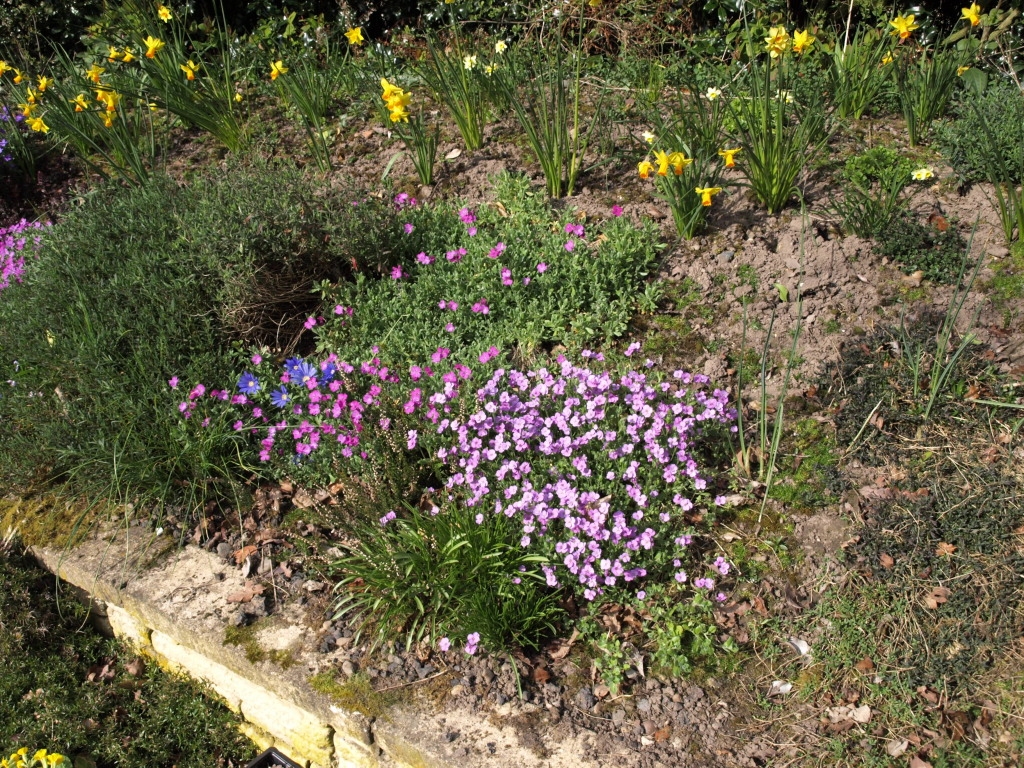 and outside this to the north is the Raised Bed and outside this to the north is the Raised Bed
A few years after we moved here when the children were young we dug out a large hole 3m deep, 16m long and 8m wide into which we sunk a butyl lined swimming pool. The soil from this, around 2250 barrow-loads, we piled around half up alongside the hole with a retaining wall in front. This is planted with small perennials of the sort you grow in rockeries though there aren't actually any rocks. These are also under-planted with spring bulbs, mainly iris and miniature narcissus.
To try and keep the swimming pool
Beyond the raised bed and behind the polytunnel are the Turf Mounds. The original one was built by stacking the turf from the paddock upside down to rot just after we moved in here. After around five years this breaks down into a good quality loamy top soil ideal for making John Innes potting compost and for replenishing tired soil in the greenhouse, polytunnel and kitchen garden.
We started a new mound mainly from garden waste not suitable for the compost heap, perennial weeds and grass and woody items like cabbage stalks. On top of these, in layers is piled the tired soil, soil from digging out the ditches and in the case of this second mound, quite a lot of the soil from the swimming pool trench. Amazingly the maturing process seems to kill all the perennial roots and most of the weed seeds.
Each mound slopes gently upwards so you can wheel a wheelbarrow full of weeds to the top and thus it grows until it is 2-3m high. There are usually three mounds at any one time, one opened to take out the soil, one maturing and one being built. Not something you would have in a small garden but a very useful resource if you have a large area under cultivation and intend to be around for many years.
|

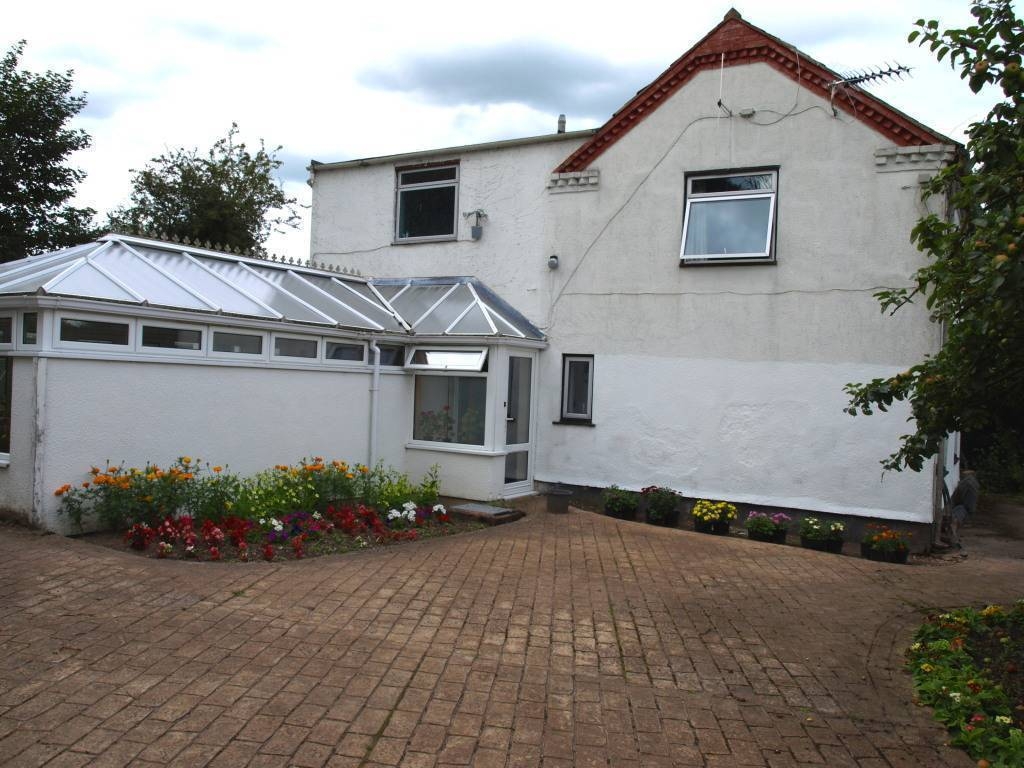 roof and was deteriorating fast by 1995 and the bathroom roof was rotten and leaking. We replaced both with proper flat roofs making the lean-to a proper utility room. Finally, in 2005 we built a large conservatory onto the southern side of the house.
roof and was deteriorating fast by 1995 and the bathroom roof was rotten and leaking. We replaced both with proper flat roofs making the lean-to a proper utility room. Finally, in 2005 we built a large conservatory onto the southern side of the house.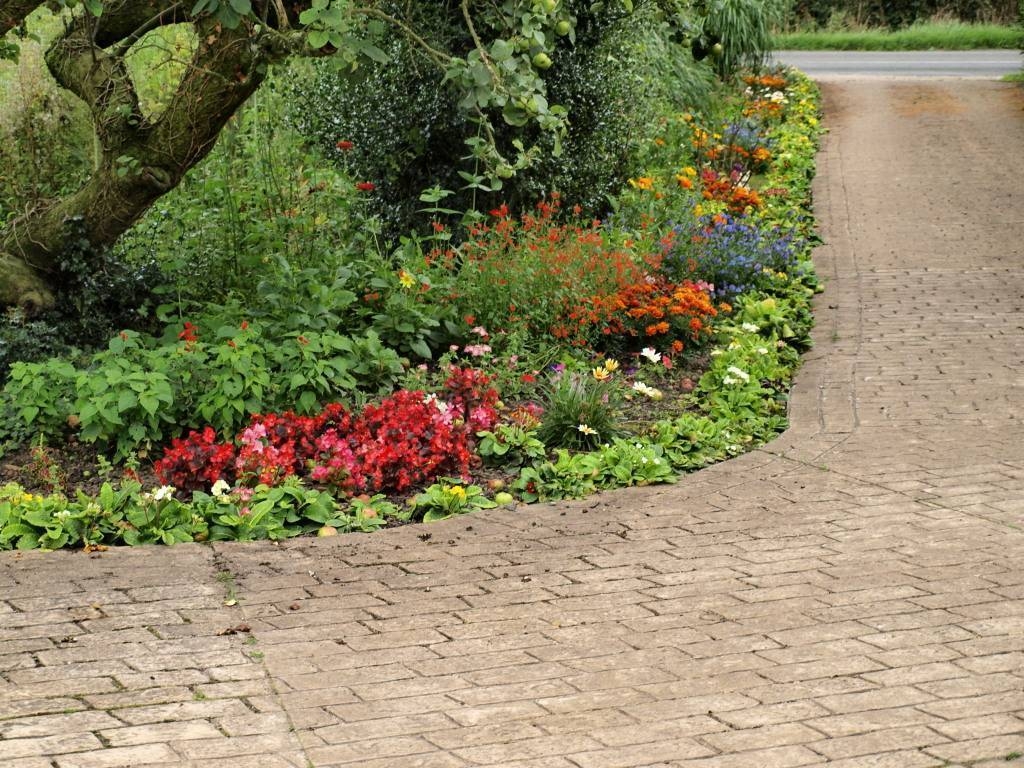
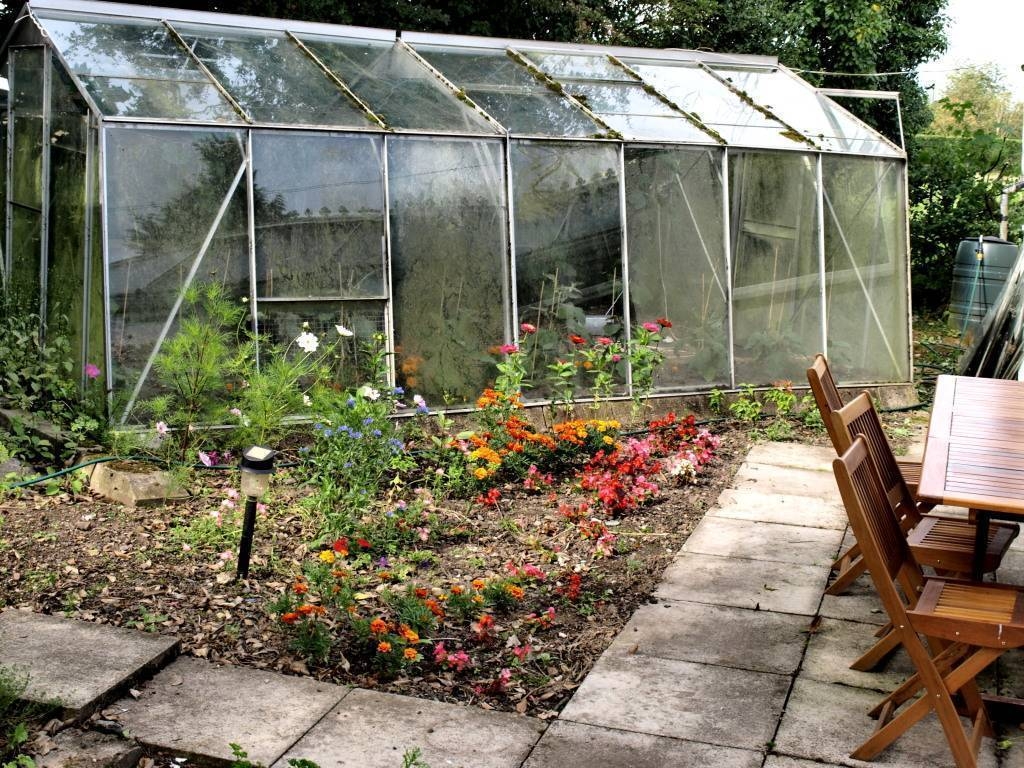 We normally use this for growing cucumbers and peppers or aubergines each summer. In spring I sometimes use it as an additional place for hardening off bedding plants. In front of the greenhouse and close to the back door of the house is a triangular bed which we previously used for growing bulbs in spring and summer bedding. Recently we decided it would be better used for growing salads, because, like the herb garden, it is close to the house.
We normally use this for growing cucumbers and peppers or aubergines each summer. In spring I sometimes use it as an additional place for hardening off bedding plants. In front of the greenhouse and close to the back door of the house is a triangular bed which we previously used for growing bulbs in spring and summer bedding. Recently we decided it would be better used for growing salads, because, like the herb garden, it is close to the house.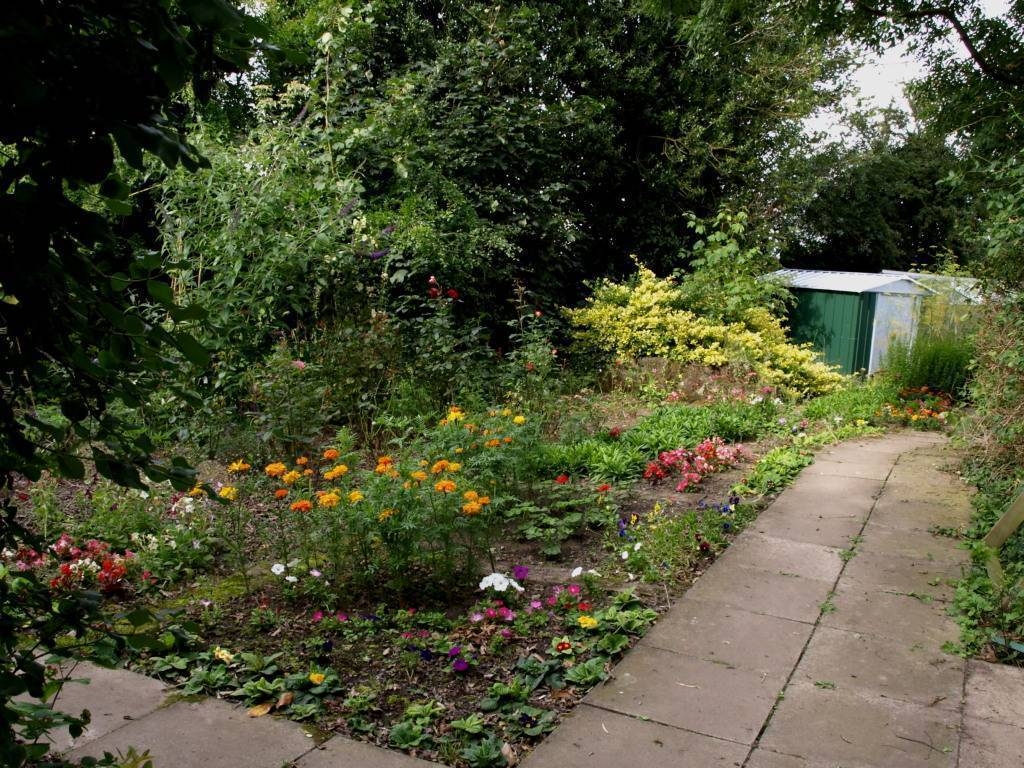 This is an area around 10m square divided into 20 beds by rows of breeze blocks. The three centre beds contain the rose trees and these are underplanted with spring bulbs, mainly daffodil and narcissus. The rest of the beds I use to plant spring and summer bedding though one of them behind the roses ended up growing a buddliea which must have seeded from elsewhere. I decided to leave it for the time being as it attracts
This is an area around 10m square divided into 20 beds by rows of breeze blocks. The three centre beds contain the rose trees and these are underplanted with spring bulbs, mainly daffodil and narcissus. The rest of the beds I use to plant spring and summer bedding though one of them behind the roses ended up growing a buddliea which must have seeded from elsewhere. I decided to leave it for the time being as it attracts 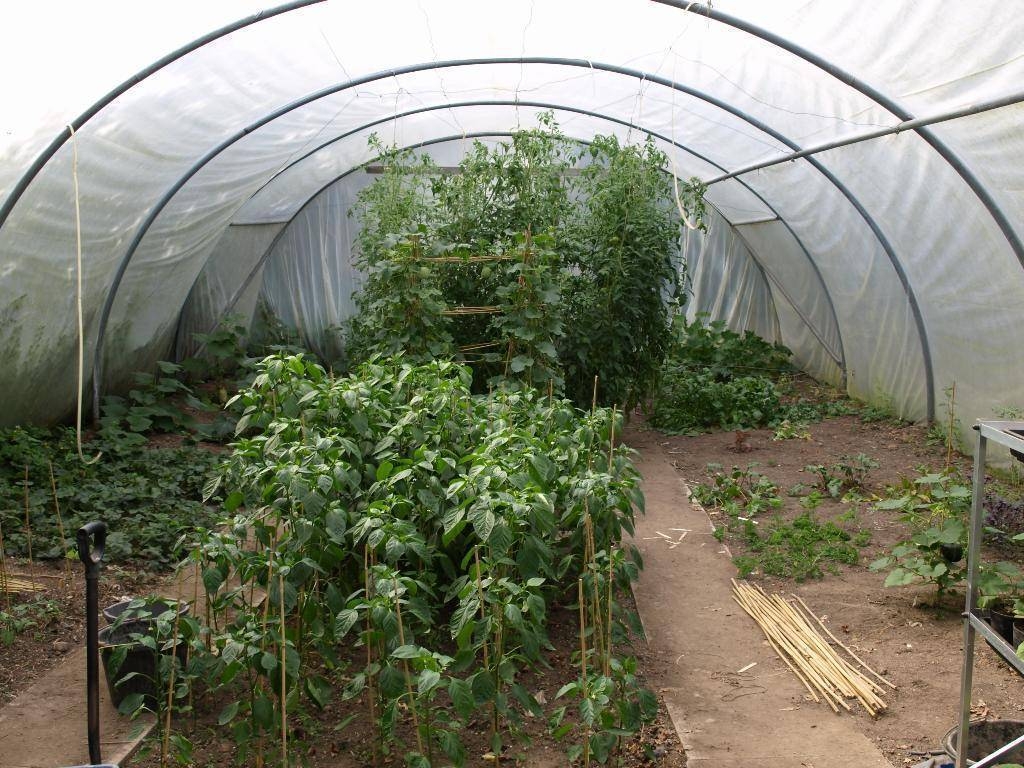 warm for as long as possible each year we built a large polytunnel over it. The children grew up and I found I was spending more time maintaining the pool than using it so we decided to fill it in and use it as a large greenhouse instead. It is much more useful in this role, providing shelter for tender plants in winter, growing potatoes and salads and sowing and raising bedding plants in spring, tomatoes, peppers, courgettes and squashes in summer and more salads in the autumn.
warm for as long as possible each year we built a large polytunnel over it. The children grew up and I found I was spending more time maintaining the pool than using it so we decided to fill it in and use it as a large greenhouse instead. It is much more useful in this role, providing shelter for tender plants in winter, growing potatoes and salads and sowing and raising bedding plants in spring, tomatoes, peppers, courgettes and squashes in summer and more salads in the autumn.



